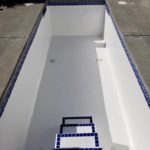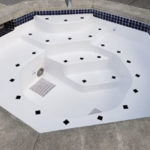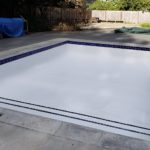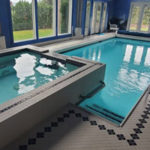Maintaining the optimal pH level in a swimming pool is essential for ensuring a safe and enjoyable swimming experience.
A balanced pH not only protects swimmers from irritation but also enhances the chlorine effectiveness of sanitizing chemicals.
This article will examine the concept of pH, its significance, and methods to achieve and maintain ideal levels, including chemical handling and balance restoration.
It will address common causes of elevated pH, the potential effects on pool quality, and provide recommendations for maintaining clear and inviting water.
We invite you to explore the fundamentals of pool maintenance and water testing to ensure a refreshing summer experience.
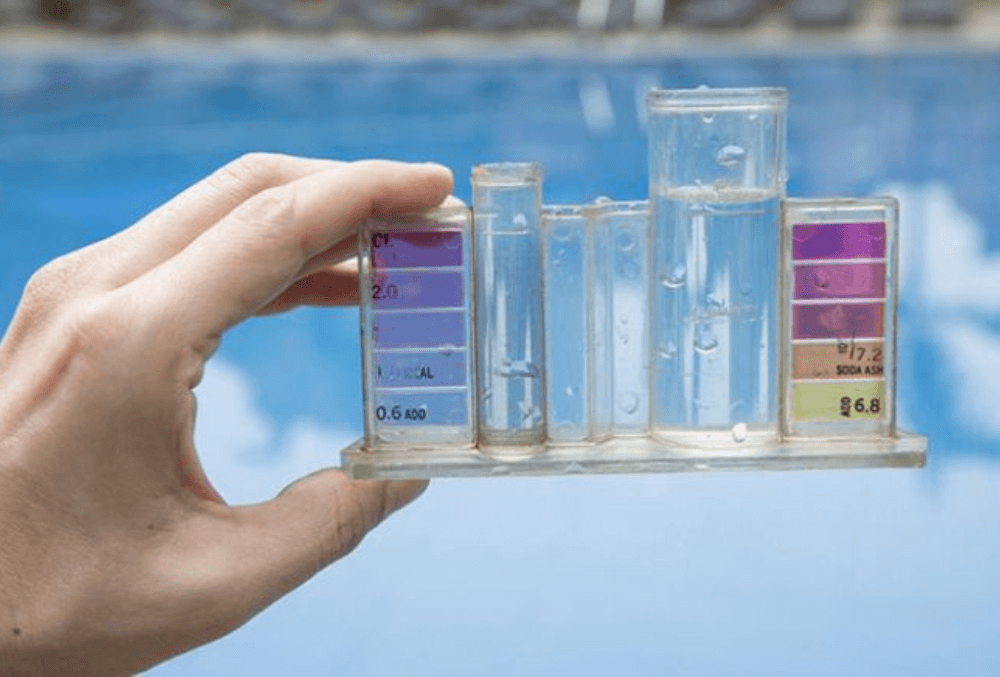
What Is pH And Why Is It Important In Pool Maintenance?
pH is a critical measure of the acidity or alkalinity of water, and comprehending its significance is essential for effective swimming pool maintenance and ensuring water clarity.
Proper pH levels are vital to ensure that the pool remains safe, hygienic, and visually clear. Maintaining the ideal pH range, which typically falls between 7.2 and 7.8, is crucial for effective sanitization, preventing the growth of bacteria and algae, and ensuring the optimal functioning of chlorine to maintain water cleanliness.
Neglecting pH balance can result in uncomfortable swimming conditions, increased chemical consumption, potential equipment damage, and cloudy water.
What Is The Ideal pH Level For A Pool?
The ideal pH level for a swimming pool is typically maintained between 7.2 and 7.8.
This range is critical for ensuring the comfort and safety of swimmers while enhancing the effectiveness of chlorine in sanitizing the water.
A pH level within this range not only promotes water clarity but also mitigates the risk of skin and eye irritation, which can occur when pH levels are either too high or too low.
Understanding the importance of maintaining a balanced pH level is essential for pool owners in Boca Raton and elsewhere.
Water that is too acidic, with a pH level below 7.2, may result in corrosive effects, potentially damaging pool equipment and surfaces over time.
Conversely, when the pH exceeds 7.8, it can lead to a decrease in sanitizer efficiency, complicating efforts to maintain clear and clean water.
What Causes High pH Levels In A Pool?
Elevated pH levels in a swimming pool can arise from various factors, frequently resulting in cloudy water and reduced efficacy of chlorine and effective sanitization.
Common contributors to high pH levels include:
- excessive chlorine usage
- elevated alkalinity
- the presence of hard water, which introduces minerals that can raise pH.
Furthermore, the evaporation of water may lead to a concentration of alkaline substances, while rainwater and alkaline water can also impact the chemical balance of the pool.
It is essential to understand these factors for effective pool maintenance.
Excessive Use Of Chlorine
Excessive use of chlorine in a swimming pool can significantly contribute to high pH levels, thereby compromising the overall balance of the water.
When chlorine is added in large quantities for sanitation purposes, it can result in an increase in alkalinity, which subsequently raises the pH.
This phenomenon can lead to diminished water clarity and may reduce the effectiveness of chlorine as a sanitizer.
To effectively manage this challenge, it is imperative for pool owners to understand the relationship between chlorine and pH levels.
Balancing chlorine usage with pH management is critical for maintaining a safe and enjoyable swimming environment.
Regular monitoring of both chlorine and pH levels using a pool test kit can assist in preventing fluctuations that may compromise water quality.

Hard Water
Hard water, which is characterized by elevated levels of calcium and magnesium, can result in increased pH levels in a swimming pool, thereby presenting challenges for pool maintenance and potentially requiring solutions like distilled water.
The minerals inherent in hard water contribute to heightened alkalinity, which can subsequently elevate pH levels beyond the ideal range.
This situation may lead to scale formation and cloudy water, negatively impacting the overall clarity and comfort safety of the pool.
In this context, pool owners must understand the intricacies of managing hard water to maintain optimal swimming conditions.
Hard water not only affects pH levels but may also hinder the efficacy of pool sanitizers, potentially leading to health risks.
Alkaline Substances
The introduction of alkaline substances into a swimming pool can lead to a significant increase in pH levels, resulting in imbalances that necessitate prompt intervention, such as using vinegar in small quantities for minor adjustments.
Sources of these substances may include specific pool chemicals, detergents, and even debris introduced by rainwater.
Such elevations in pH can cause cloudy water and reduce the effectiveness of sanitizers, thereby creating discomfort for pool owners.
To gain a comprehensive understanding of this issue, it is essential to identify the various types of alkaline substances involved.
- Bicarbonates, commonly found in baking soda and certain pool maintenance products, are frequent contributors to elevated pH levels.
- Calcium carbonate can infiltrate pools through the use of calcium-rich chemicals or through hard water.
- Sodium carbonate, also referred to as soda ash, is often utilized for adjusting alkalinity but may inadvertently lead to increased pH levels.
These substances generally enter pools during routine maintenance, rainfall, or even from the swimmers themselves.
Their presence not only disrupts the chemical balance of the water but can also result in the corrosion of pool equipment and surfaces, issues that companies like Las Vegas Pool Plastering and those specializing in fiberglass pools Las Vegas often manage.
To mitigate the effects of rising pH levels, regular testing and appropriate chemical adjustments are fundamental strategies.
Establishing a diligent maintenance routine and utilizing pH stabilizers can be effective measures in ensuring that water quality remains optimal, thus enhancing the swimming experience.
What Are The Effects Of High pH Levels In A Pool?
Elevated pH levels in a swimming pool can result in a range of negative effects, including skin and eye irritation, cloudy water, and a decrease in the effectiveness of chlorine.
When pH levels surpass the recommended range, swimmers may encounter discomfort, as high pH can irritate the skin and eyes, ultimately detracting from the overall swimming experience.
Furthermore, the sanitizing effectiveness of chlorine is compromised, which heightens the risk of bacterial and algae proliferation.
Skin And Eye Irritation
Elevated pH levels can lead to significant skin and eye irritation among swimmers, thereby rendering the pool experience both uncomfortable and potentially unsafe.
When pool water becomes excessively alkaline, it disrupts the natural balance of moisture in the skin and eyes, resulting in dryness, redness, and a burning sensation.
This discomfort poses a primary concern for pool owners and operators, as it can discourage patrons from utilizing the facility.
These symptoms not only detract from the enjoyment of swimmers but can also lead to more serious conditions if not adequately addressed.
It is imperative for pool operators to maintain a balanced pH level to ensure a safe and pleasant swimming environment for all patrons.
Cloudy Water
Cloudy water is a prevalent issue associated with elevated pH levels in swimming pools, which significantly affects water clarity and aesthetics.
As pH levels increase, the formation of scale and particulate matter can occur, resulting in murky water that deters individuals from using the pool.
Maintaining clear water is essential for providing enjoyable swimming conditions and reflects the overall health of the pool. High pH levels are detrimental, especially in fiberglass pools in Las Vegas.
High pH levels can arise from various factors, including excessive alkalinity, improper chemical balancing, or the introduction of contaminants.
When the pH is elevated, not only does the water become cloudy, but it can also promote the growth of algae, further complicating clarity.
To address this concern, pool owners should implement a series of remedial actions, such as adjusting alkalinity levels and considering vinegar usage.
Reduced Effectiveness Of Chlorine
High pH levels can significantly diminish the effectiveness of chlorine, which is essential for proper sanitization in swimming pools.
When pH levels rise, chlorine becomes less active, making it increasingly difficult to eliminate harmful bacteria and algae that compromise water quality and threaten swimmer safety.
This situation not only elevates the risk of pool contamination but also necessitates increased chlorine usage, resulting in higher maintenance costs.
Understanding the delicate balance between pH and chlorine is critical for maintaining a healthy swimming environment.
When pH levels exceed the optimal range of 7.2 to 7.8, the effectiveness of chlorine decreases, allowing various contaminants to proliferate.
How To Lower pH In Your Pool?
Lowering the pH in a swimming pool is essential for restoring balance and ensuring a safe swimming environment.
There are several effective methods to achieve this, including the use of muriatic acid, sodium bisulfate, or specialized pH reduction products.
For expert advice, you can contact pool specialists like Rei Bayucca.
Each of these options can effectively reduce elevated pH levels in a timely manner; however, it is imperative to handle these chemicals with caution and adhere to the manufacturer’s instructions to ensure both safety and effectiveness.
Use Muriatic Acid
Muriatic acid is a potent chemical frequently employed to effectively reduce pH levels in swimming pools.
When administered in appropriate quantities, it can rapidly lower elevated pH levels, thereby restoring equilibrium to the water.
Given its corrosive properties, it is essential to handle muriatic acid with utmost caution, utilizing protective gear and adhering to stringent safety protocols.
To utilize this chemical safely and effectively, pool owners should first calculate the appropriate dosage based on the specific size of their pool.
A general guideline suggests adding approximately 1 quart of muriatic acid per 10,000 gallons of water to achieve a reduction in pH of approximately 0.2 units.
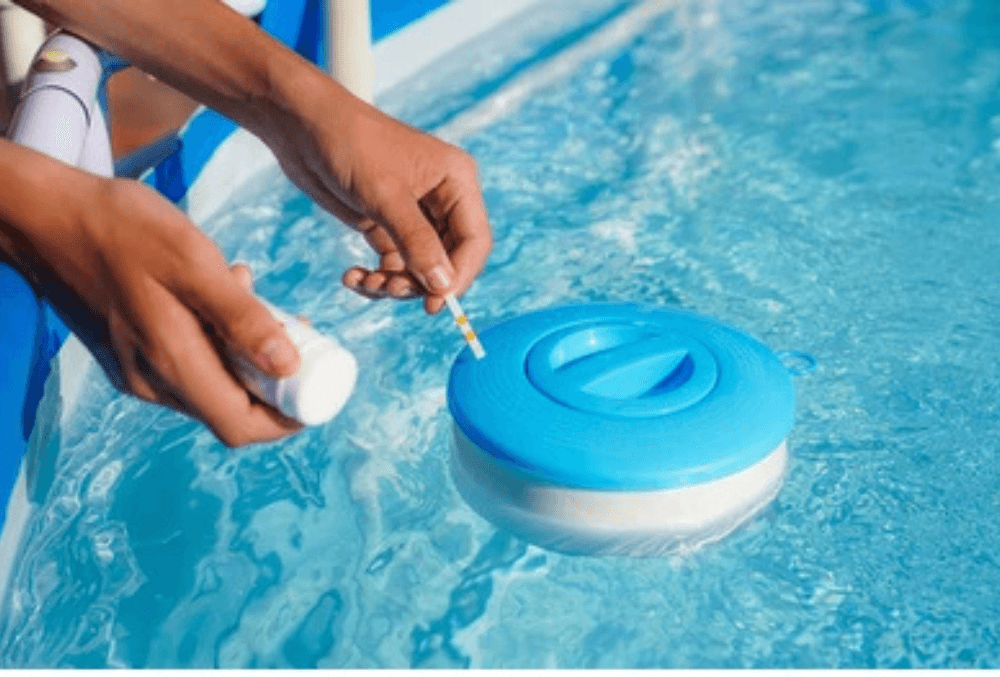
Add Dry Acid (Sodium Bisulfate)
Sodium bisulfate, commonly known as dry acid, serves as an effective alternative for reducing pH levels in swimming pools.
This chemical is more manageable than muriatic acid and can be added directly to the pool water, facilitating a gradual decrease in pH levels.
It is essential to ensure proper dosage based on the pool volume in order to achieve the desired results while avoiding rapid fluctuations.
Sodium bisulfate usage is particularly beneficial in maintaining balanced alkalinity levels.
When utilizing sodium bisulfate, it is imperative to calculate the required amount with precision.
For every 10,000 gallons of water, approximately 1 pound of sodium bisulfate will lower the pH by approximately 0.2.
Safety considerations must be taken into account. It is advisable to always wear gloves and goggles when handling this chemical, as it may cause skin and eye irritation.
Following application, it is crucial to regularly monitor the water chemistry to ensure that pH levels stabilize within a safe range.
This practice is essential for maintaining a healthy swimming environment and preventing potential damage to pool equipment or surfaces.
Use A pH Reducer Product
Utilizing a pH reducer product specifically formulated for swimming pools can effectively lower elevated pH levels while ensuring optimal sanitization.
These products are designed to adjust pH safely without introducing additional harmful chemicals, making them a practical choice for pool owners.
Regular application of these products can assist in maintaining optimal water balance, thereby contributing to the overall health of the pool.
How To Prevent High pH Levels In A Pool?
Preventing elevated pH levels in a swimming pool is critical for maintaining water quality and ensuring the safety of swimmers.
Implementing preventive measures, such as conducting regular water tests, utilizing a pH stabilizer, and limiting the application of alkaline products, will contribute to the maintenance of optimal pH levels.
Proactive management is essential to avoid the discomfort and complications associated with high pH levels.
Regularly Test The Water
Regular testing of swimming pool water is essential for identifying pH levels and ensuring optimal water quality.
Utilizing a pool test kit enables owners to monitor pH, alkalinity, and chlorine levels, allowing for timely interventions prior to the onset of imbalances.
Consistent testing fosters a proactive approach to pool maintenance and contributes to a safer swimming environment.
Regular water tests can prevent issues like high pH, commonly observed in pools across Boca Raton.
To maintain optimal water conditions, it is recommended that pool owners conduct tests at least once a week during the swimming season.
By adhering to the provided instructions for the specific test kit, users can accurately measure the pertinent chemical levels.
Typically, these kits include test strips or liquid reagents that react with the water, providing a clear visual indication of chemical balance.
This practice is crucial for pools in areas with high water usage like Las Vegas, Nevada.
- After collecting the test sample, it is important to wait the designated time before interpreting the results to ensure accuracy.
- If the readings fall outside the recommended ranges, adjustments such as adding chemicals or modifying circulation may be necessary.
- Regular logging of results can also aid in identifying patterns and potential issues over time.
This systematic approach enables pool owners to enjoy a clean and inviting pool while minimizing the risk of irritation associated with improper chemical levels.
Whether in fiberglass pools in Las Vegas or traditional setups, maintaining balance is crucial to avoid issues like high pH or low pH levels.
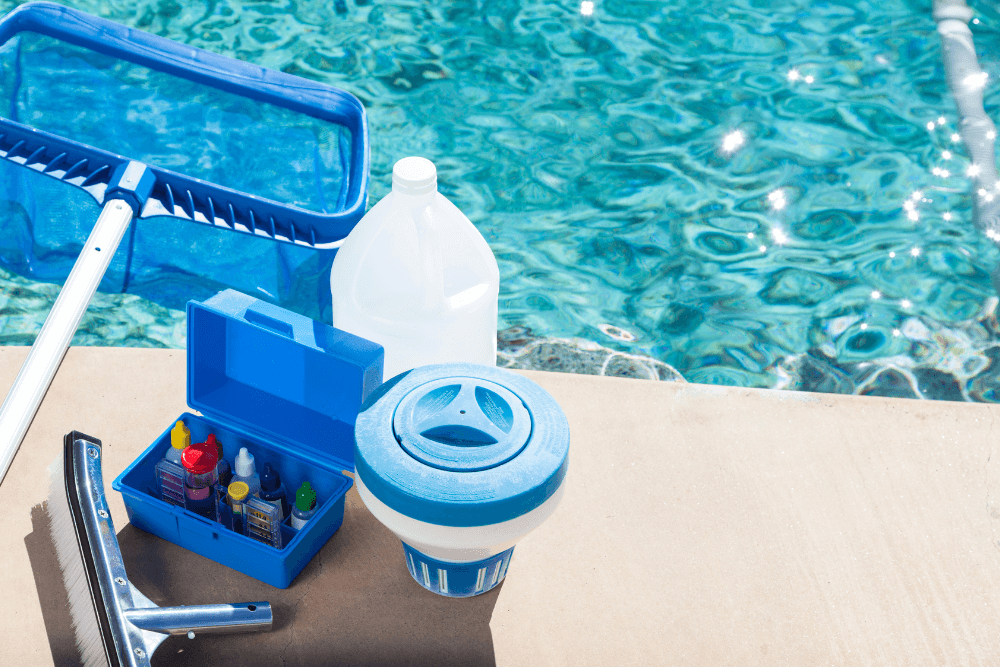
Use A pH Stabilizer
Incorporating a pH stabilizer into swimming pool maintenance routines can significantly aid in preventing elevated pH levels.
These products are specifically designed to buffer pH fluctuations, thereby maintaining the levels within the ideal range and enhancing the effectiveness of sanitizers such as chlorine.
By utilizing a stabilizer, pool owners can achieve more consistent water quality while minimizing the necessity for frequent adjustments.
Maintaining the optimal pH balance in a swimming pool is crucial not only for the comfort of bathers but also for the overall health of the swimming environment, as emphasized by experts like those from Boca Raton to Las Vegas.
pH stabilizers function by employing buffering agents that resist rapid changes in acidity or alkalinity, resulting in a more stable chemical composition.
This stability is particularly advantageous during varying weather conditions or following periods of heavy usage.
The benefits of regularly applying these stabilizers include:
- Reduced chemical costs due to fewer adjustments.
- Minimized wear and tear on pool equipment.
- Enhanced clarity and comfort of the water.
It is advisable to introduce pH stabilizers during the initial pool setup or subsequent to major water changes, as they can be seamlessly integrated into routine maintenance.
Some widely used options include sodium bicarbonate and calcium carbonate, each offering distinct benefits tailored to different types of pools.
Consistency in pool maintenance is essential for optimal performance and enjoyment.
Limit The Use Of Alkaline Products
Limiting the use of alkaline products in and around swimming pools is essential for maintaining balanced pH levels and enhancing water clarity.
Substances such as certain pool chemicals, soaps, and even rainwater can introduce alkalinity, potentially leading to elevated pH levels if not monitored closely.
By being vigilant about what enters the pool, owners can significantly reduce the risk of imbalances.
It is crucial to understand the specific types of alkaline products that may inadvertently affect water quality. Common items to monitor include:
- Baking soda – commonly used for pH adjustment, but it can raise levels if over-applied.
- Alkaline-based cleaning agents – soaps and detergents can increase alkalinity when residues accumulate.
- Rainwater – may naturally have a higher pH, particularly in certain regions.
To mitigate these effects, pool owners should implement practical strategies such as:
- Regularly testing water with pH kits to monitor levels, ensuring that pH levels remain optimal.
- Occasionally using acid-based products to counterbalance excess alkalinity.
- Maintaining proper filtration and circulation to further enhance water quality.
By adopting these measures, pool owners can achieve a balance that promotes a healthier swimming environment, an approach well-advised by experts like Rei Bayucca in the pool maintenance field.
What Are The Safety Measures When Lowering pH In A Pool?
Implementing safety measures when lowering the pH in a swimming pool is essential for safeguarding both users and the integrity of the pool.
This includes the use of protective gear and meticulous following of manufacturer instructions.
Ensuring the safety and comfort of swimmers begins with responsible management of these chemicals.
Wear Protective Gear
Wearing protective gear when handling pool chemicals is essential for ensuring safety during the process of lowering pH levels.
Items such as gloves, goggles, and masks serve to protect against chemical splashes and inhalation, thereby minimizing the risk of injury.
It is imperative for pool owners to prioritize their own safety and that of others by adopting appropriate protective measures.
Plus gloves, goggles, and masks, utilizing chemical-resistant aprons can provide an added layer of protection by shielding clothing and skin from potential spills.
It is equally important to select suitable footwear, such as closed-toe shoes or boots, to prevent accidental contact with chemicals on the feet.
- Gloves: Protect against skin irritation and chemical burns.
- Goggles: Prevent eye damage from splashes or vapors.
- Respirators or masks: Filter harmful fumes and promote safe inhalation.
- Aprons: Protect clothing and skin from spills.
- Footwear: Protect feet from spills and provide stability.
These best practices should be consistently communicated to friends and family to cultivate a culture of safety surrounding chemical handling.
Educational sessions, complete with demonstrations, can effectively enhance awareness regarding the importance of these precautions.
Follow Instructions Carefully
Following instructions meticulously when utilizing chemicals to lower pH levels in a swimming pool is essential for ensuring both safety and effectiveness.
Each product is accompanied by specific guidelines concerning dosage and application methods, which must be strictly followed to prevent accidents and achieve the desired outcomes.
Disregarding these instructions can result in an improper chemical balance and present safety hazards.
In the context of pool maintenance, understanding the chemical composition is as vital as comprehending the mechanical aspects.
Consumers should educate themselves about the chemical makeup of any product they utilize. For instance, it is imperative to review the label for:
- Dosage recommendations
- Application techniques
- Safety precautions
- Storage instructions
Neglecting these critical elements can lead to ineffective treatment and potentially hazardous pool conditions.
For example, administering an excessive amount of a pH decreaser may create an overly acidic pool environment, which can irritate skin and damage equipment.
Therefore, approaching the use of chemicals with caution and diligence not only ensures a well-maintained swimming experience but also enhances safety for all users.
Avoid Mixing Chemicals
Avoiding the mixing of chemicals when adjusting pH levels in a swimming pool is a critical safety measure that all pool owners must adhere to.
Mixing certain chemicals can lead to hazardous reactions, resulting in the release of harmful gases or even explosive incidents.
To maintain safety and ensure proper chemical balance, it is essential to treat each chemical separately and meticulously follow usage instructions.
When handling pool chemicals such as chlorine and acids, individuals must be cognizant of the potential dangers associated with improper mixing.
For example, combining chlorine with ammonia can produce toxic chloramine gases, which not only irritate the eyes and respiratory system but may also exacerbate pre-existing health conditions.
Likewise, mixing chlorine with acids can lead to a highly explosive reaction that poses severe risks.
To prevent these dangerous outcomes, it is imperative for pool owners to strictly adhere to safety protocols.
This includes the use of appropriate personal protective equipment (PPE), ensuring proper ventilation during the use of chemicals, and disposing of excess chemicals in accordance with safety guidelines.
Responsible chemical handling not only protects individuals but also ensures a safe swimming environment for all.
